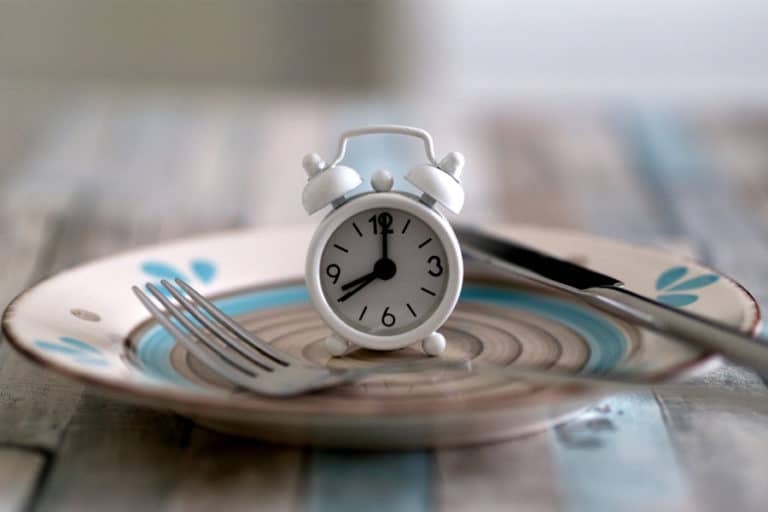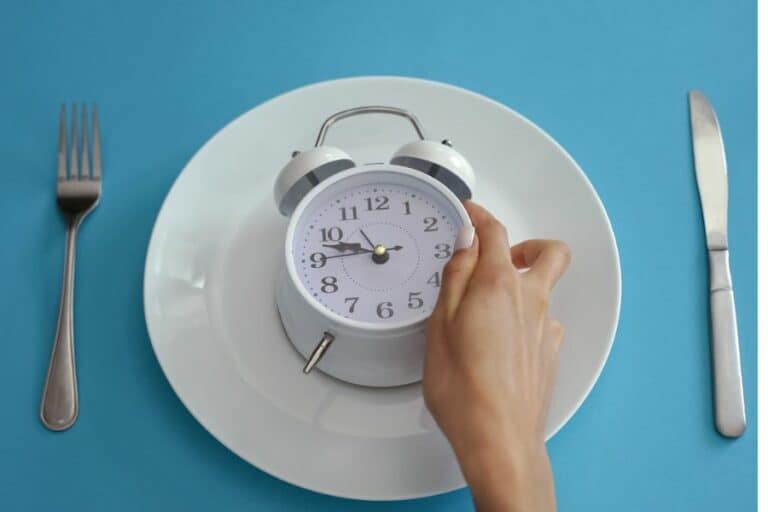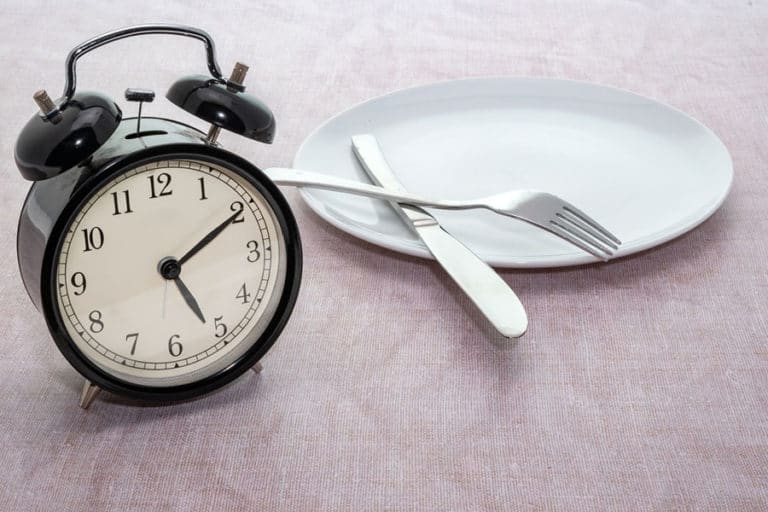How To Lose 20 Pounds Fast: Proven Tips And Strategies

Lose 20 Pounds Fast | Calculating weight loss | Exercise Tips | 1 Week Sample Workout Plan | Diet Tips | 1-week sample diet plan | Lifestyle tips | FAQs
Are you struggling to lose those stubborn 20 pounds? Losing weight can be a challenging task, but with the right approach, it’s definitely achievable.
With the right combination of simple exercise, diet, and lifestyle improvements, you can expect to lose 20 pounds in as little time as 10-12 weeks.
We will discuss the science behind weight loss, expected timelines, diet, and workout charts to help you lose 20 pounds.
How to lose 20 pounds fast?
Before diving into the tips and strategies, it’s essential to understand the science behind weight loss.
The science is quite simple really: Losing weight requires a calorie deficit.
This means you need to burn more calories than you consume. In numeric terms; it is estimated that a pound of fat contains around 3,500 calories. Therefore, to lose 20 pounds, you need to create a calorie deficit of 70,000 calories (3,500 x 20).
Calculating weight loss: the math behind losing 20 pounds
To create a caloric deficit, you can either reduce your calorie intake, increase your physical activity level, or combine both. For example, if you reduce your calorie intake by 500 calories per day and increase your physical activity to burn an additional 500 calories per day, you can create a deficit of 1,000 calories per day, which will lead to a weight loss of approximately 2 pounds per week.
To achieve this, you need to factor in your Basal Metabolic Rate(BMR) and how many calories you should eat in a day.
Calculate your Basal Metabolic Rate (BMR)
Your BMR is the number of calories your body needs to perform basic functions such as breathing, circulation, and cell production.
You can calculate your BMR using a formula such as the Harris-Benedict equation:
| Men | BMR = 88.4 + (13.4 x weight in kg) + (4.8 x height in cm) – (5.68 x age in years) |
| Women | BMR = 447.6 + (9.25 x weight in kg) + (3.1 x height in cm) – (4.68 x age in years) |
Determine your daily caloric needs
Once you know your BMR, you need to factor in your daily physical activity level to determine your daily caloric needs.
You can use a good calorie calculator to calculate your calorie intake requirement depending on your vital stats and activity levels.
Alternatively, you can use a formula such as the Mifflin-St. Jeor equation:
| Men | Daily Caloric Needs = BMR x 1.2 (sedentary) to 1.9 (very active) |
| Women | Daily Caloric Needs = BMR x 1.2 (sedentary) to 1.7 (very active) |
Create a calorie deficit
If your daily caloric needs are 2,500 calories, you can create a deficit of 500 calories by reducing your calorie intake to 2,000 calories per day.
Alternatively, you can create a deficit of 500 calories by increasing your physical activity level to burn an additional 500 calories per day through exercise.
Expected Timeline
By creating a caloric deficit of 500-1,000 calories per day, you can aim to lose 1-2 pounds per week, which can add up to a total weight loss of 20 pounds over a period of 10-20 weeks.
However, this timeline can vary depending on various factors, such as age, gender, weight, height, and activity level.
Exercise tips to lose 20 pounds fast
In addition to a balanced diet, incorporating exercise into your routine can help you burn more calories and reach your weight loss goals. Here are some exercise tips to help you lose 20 pounds:
Include cardio in your routine
Cardiovascular exercises such as running, cycling, and swimming can help you burn calories and improve your cardiovascular health. According to the CDC [1]Centers for Disease Control and Prevention: How much physical activity do older adults need? people should aim for at least 150 minutes of moderate-intensity cardio per week.
Additionally, a 2013 study [2]National Library of Medicine: Aerobic exercise alone results in clinically significant weight loss for men and women: Midwest Exercise Trial-2 on the effect of aerobic (cardio) exercises on weight loss noted that supervised aerobic exercise resulted in clinically significant weight loss. The results were equal in both men and women and were achieved without energy restriction through diet.
Start lifting weights
Strength training can help you build and maintain muscle mass. Since muscle consumes more calories in the long run, you can expect an increase in your metabolic rate. This means you are more likely to burn fat faster and for a longer time.
Studies have proven the above claim. One study [3]Wiley Online Library: Resistance training effectiveness on body composition and body weight outcomes in individuals with overweight and obesity across the lifespan: A systematic review and … Continue reading observed considerable reduction in body fat when resistance and aerobic exercises are combined with caloric restriction
Aim for at least two strength training sessions per week if you wish to lose 20 pounds faster and in a more sustainable manner.
Increase your NEAT(non-exercise activity thermogenesis)
Non exercise activity thermogenesis [4]PubMed: Non-exercise activity thermogenesis (NEAT) refers to the calories you burn during non-exercise activities such as walking, standing, and fidgeting. Increasing your NEAT can help you burn more calories throughout the day.
You can do this by taking the stairs instead of the elevator, standing at your desk, or taking short walks throughout the day. Burning as little as 100 calories each day through NEAT results in the loss of approximately 10½ lbs. in a year [5]National Academy of Sports Medicine: NON-EXERCISE ACTIVITY THERMOGENESIS: A NEAT APPROACH TO WEIGHT LOSS.
1 Week Sample Workout Plan
Creating a workout plan that aligns with your goals can help you stay on track and achieve your weight loss goals.
Here is a 1-week sample workout plan to lose 20 pounds in 10 weeks by creating a caloric deficit of 500-1000 calories per day.
| Days | Exercises |
| Monday | Warm-up: 10 minutes of jogging or jumping jacks Strength training: 3 sets of 12 reps of squats, lunges, push-ups, and planks Cardio: 30 minutes of cycling or running |
| Tuesday | Warm-up: 10 minutes of stretching or yoga Cardio: 45 minutes of swimming or dancing |
| Wednesday | Warm-up: 10 minutes of jogging or jumping jacks Strength training: 3 sets of 12 reps of deadlifts, bench presses, pull-ups, and sit-ups Cardio: 30 minutes of rowing or stair climbing |
| Thursday | Warm-up: 10 minutes of stretching or yoga Cardio: 45 minutes of kickboxing or aerobics |
| Friday | Warm-up: 10 minutes of jogging or jumping jacks Strength training: 3 sets of 12 reps of leg press, bicep curls, tricep dips, and Russian twists Cardio: 30 minutes of elliptical or high-intensity interval training (HIIT) |
| Saturday | Warm-up: 10 minutes of stretching or yoga Cardio: 60 minutes of hiking or brisk walking |
| Sunday | Rest day |
Note: Remember to consult a fitness expert and/or a doctor before starting any new workout routine. Adjust the workout plan according to your fitness level and physical abilities.
Diet tips to lose 20 pounds
A balanced diet is crucial for losing weight, and making the right food choices can make a significant difference. Here are some tips to help you eat right to lose 20 pounds:
- Count calories: To lose weight, you need to create a calorie deficit by consuming fewer calories than you burn. Using a calorie-tracking app can help you monitor your calorie intake and ensure you’re on the right track.
- Drink more water: Drinking water before meals can help you feel fuller and reduce your calorie intake (particularly liquid calories). Drinking 8-10 glasses of water a day can considerably improve the body’s metabolic rate.
- Increase your protein intake: Protein is essential for building and repairing muscles. A healthy amount of muscle is the key to higher calorie burn and improved metabolism. Additionally, these foods can also help you feel full. Include more protein-rich foods such as lean meat, fish, eggs, and legumes in your diet.
- Eat more fiber: Fiber can help you feel full and satisfied, reduce your appetite, and aid in digestion. Include fiber-rich foods such as fruits, vegetables, whole grains, and nuts in your diet.
- Consume healthy fats: Healthy fats such as avocado, olive oil, and nuts can help you feel full and satisfied while providing essential nutrients to your body.
- Five servings of fruits and vegetables: The World Health Organization report [6]World Health Organization: Healthy diet recommends that average adults consume at least five servings (400 gms) of fruits and vegetables per day. This excludes starchy vegetables. A diet consisting of a variety of fruits and vegetables can help you meet your nutrient requirements, keep you full, and reduce the risk of chronic diseases.
- Reduce your refined carb and sugar consumption: Refined carbs and sugar can cause spikes in blood sugar levels, leading to increased hunger and cravings. Avoid processed foods and sugary drinks, and opt for whole grains and natural sweeteners instead.
- Eat on time and control your portion size: Eating at regular intervals and controlling your portion size can help you avoid overeating and maintain a calorie deficit.
A healthy and balanced diet is essential for losing weight and maintaining a healthy weight in the long term. Here are some foods to eat and avoid during your weight loss journey:
| Foods to eat | Foods to avoid |
| Lean proteins such as chicken, fish, and tofu | Processed foods such as chips, cookies, and candy |
| Fruits and (non-starchy) vegetables | Sugary drinks such as soda and juice |
| Whole grains such as quinoa, brown rice, and oats | High-fat foods such as fried foods and full-fat dairy products |
| Healthy fats such as avocado, nuts, and olive oil |
Sample 1-week diet plan to lose 20 pounds
Here is a sample 1-week diet plan to lose 20 pounds in 10 weeks, with a daily caloric intake of no more than 1500-1800 calories:
| Days | Breakfast | Lunch | Snack | Dinner |
| Monday | Whole wheat English muffin, 1 scrambled egg, 1 slice of low-fat cheese, 1 small orange | 1 small can of tuna, 1 whole wheat pita bread, 1 tbsp of hummus, 1 small carrot | 1 small orange, 1 oz of almonds | 4 oz of grilled salmon, 1 cup of brown rice, 1 cup of steamed vegetables |
| Tuesday | 1 cup of oatmeal, 1 banana, 1 cup of unsweetened almond milk | 1 small turkey sandwich on whole wheat bread, 1 small apple | 1 small peach, 1 oz of cashews | 4 oz of grilled chicken breast, 1 cup of quinoa, 1 cup of steamed vegetables |
| Wednesday | 1 whole wheat bagel, 2 tbsp of low-fat cream cheese, 1 small apple | 1 small grilled chicken breast, 1 cup of brown rice, 1 cup of steamed vegetables | 1 small apple, 1 oz of pistachios | 4 oz of grilled sirloin steak, 1 small baked sweet potato, 1 cup of steamed vegetables |
| Thursday | 1 slice of whole wheat toast, 2 scrambled eggs, 1 small peach | 1 small can of tuna, 1 cup of mixed greens, 1 small apple | 1 small pear, 1 oz of walnuts | 4 oz of grilled shrimp, 1 cup of mixed greens, 1 small apple |
| Friday | 1 cup of plain Greek yogurt, 1/2 cup of mixed berries, 1 slice of whole wheat toast | 1 small turkey sandwich on whole wheat bread, 1 small orange | 1 small banana, 1 oz of almonds | 4 oz of grilled chicken breast, 1 small baked sweet potato, 1 cup of steamed vegetables |
| Saturday | 1 hard-boiled egg, 1 small pear, 1 slice of whole wheat toast | 1 small grilled chicken breast, 1 cup of quinoa, 1 cup of steamed vegetables | 1 small peach, 1 oz of peanuts | 4 oz of grilled salmon, 1 cup of quinoa, 1 cup of steamed vegetables |
| Sunday | 1 cup of unsweetened oat milk, 1 whole wheat English muffin, 1 tbsp of almond butter | 1 small can of tuna, 1 whole wheat pita bread, 1 tbsp of hummus, 1 small carrot | 1 small apple, 1 oz of mixed nuts | 4 oz of grilled sirloin steak, 1 cup of brown rice, 1 cup of steamed vegetables |
Lifestyle tips for losing weight and maintaining ideal weight
Making lifestyle changes can help you lose weight and maintain a healthy weight in the long term. Here are some lifestyle tips to help you achieve your weight loss goals:
- Follow a sleep schedule: Sleep and weight loss are connected through a number of pathways like: sympathetic overstimulation, hormonal imbalance, and inflammation. Sleep deprivation or imbalance is directly linked to altered metabolism [7]PubMed: Sleep and metabolism: an overview. Getting enough sleep can help you control your appetite, reduce cravings, and improve your mood. Aim for at least 7-8 hours of sleep per night and try to stick to a regular sleep schedule.
- Eat slowly and mindfully: Mindful eating can help you enjoy your food more, reduce your appetite, and prevent overeating. Additionally, this technique helps to improve digestion leading to better weight management. A study has found that mindful eating may prove to be an effective, alternative weight loss technique [8]National Library of Medicine: Eating attentively: a systematic review and meta-analysis of the effect of food intake memory and awareness on eating.
- Reduce stress: Stress can lead to emotional eating and make it challenging to stick to a healthy diet. Try stress-reducing activities such as yoga, meditation, or deep breathing exercises.
- Stay active: Staying active throughout the day can help you burn more calories and stay motivated. Try to take breaks throughout the day to stretch or go for a short walk.
- Try intermittent fasting: Intermittent fasting involves alternating periods of eating and fasting and has been shown to promote weight loss and improve metabolic health. Consult with a healthcare professional before starting any intermittent fasting protocol.
Conclusion
In conclusion, losing 20 pounds requires a combination of healthy eating habits, regular exercise, and lifestyle changes. It’s important to set realistic goals, stay motivated, and be consistent in your efforts. By following these tips and strategies, you can achieve your weight loss goals and maintain a healthy weight in the long term.
FAQs
The world of weight loss abounds in myths, and false or confusing information. Here are a few frequently asked questions about losing 20 pounds to clear any further doubts you may have:
Can I lose 20 pounds in a month?
Losing 20 pounds in a month is not considered safe or sustainable. A safe and healthy rate of weight loss is 1-2 pounds per week.
How to walk off 20 pounds?
Walking can be a great way to lose weight, but it’s important to also incorporate strength training and a healthy diet. Aim for at least 30 minutes of walking per day and gradually increase your intensity and duration.
What is the easiest way to lose 20 pounds?
There is no easy way to lose 20 pounds, but making lifestyle changes such as eating a healthy diet and staying active can help you achieve your weight loss goals in a safe and sustainable way.
References
| ↑1 | Centers for Disease Control and Prevention: How much physical activity do older adults need? |
|---|---|
| ↑2 | National Library of Medicine: Aerobic exercise alone results in clinically significant weight loss for men and women: Midwest Exercise Trial-2 |
| ↑3 | Wiley Online Library: Resistance training effectiveness on body composition and body weight outcomes in individuals with overweight and obesity across the lifespan: A systematic review and meta-analysis |
| ↑4 | PubMed: Non-exercise activity thermogenesis (NEAT) |
| ↑5 | National Academy of Sports Medicine: NON-EXERCISE ACTIVITY THERMOGENESIS: A NEAT APPROACH TO WEIGHT LOSS |
| ↑6 | World Health Organization: Healthy diet |
| ↑7 | PubMed: Sleep and metabolism: an overview |
| ↑8 | National Library of Medicine: Eating attentively: a systematic review and meta-analysis of the effect of food intake memory and awareness on eating |







